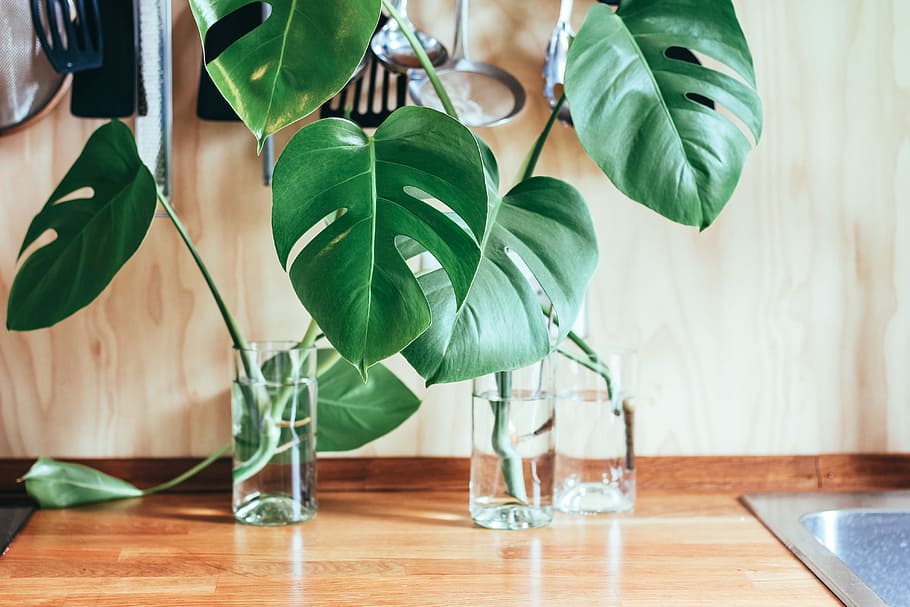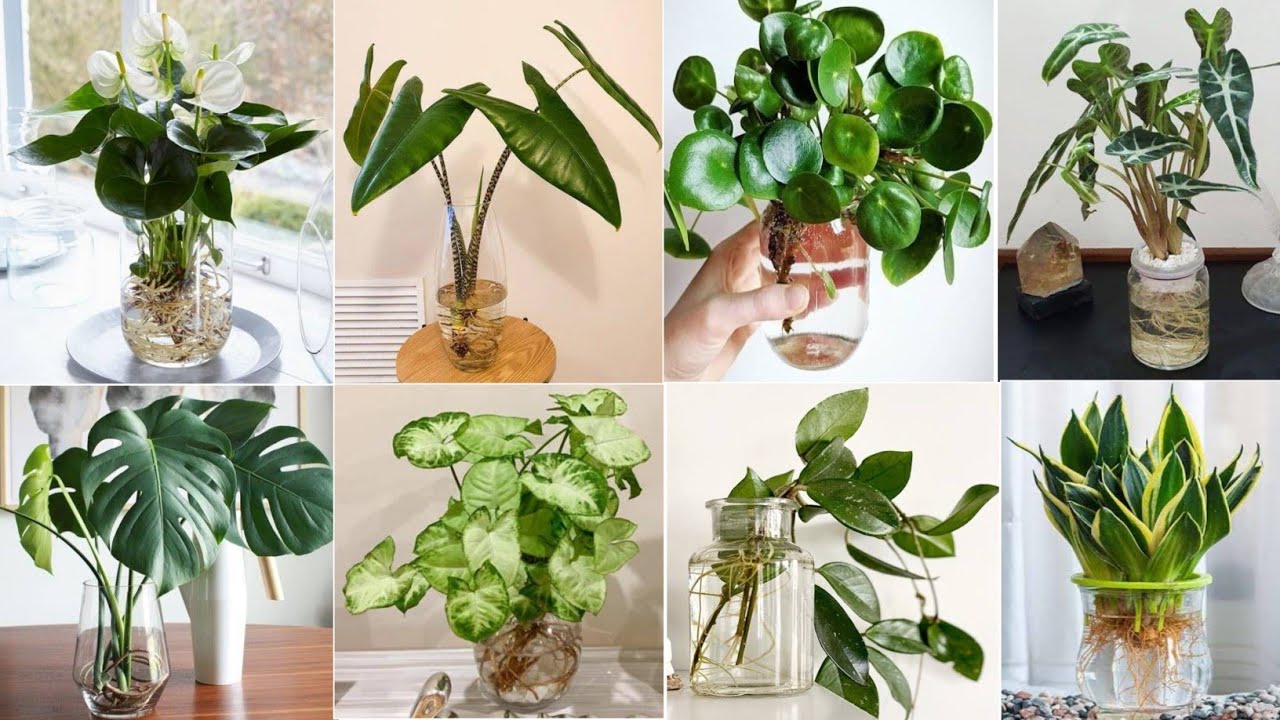In the world of indoor gardening, there’s a growing trend that’s making waves – growing Indoor plants in water! Not only does this method eliminate the need for soil, but it also adds a unique and stylish touch to any indoor space. Whether you’re a seasoned plant enthusiast or just starting, water-grown indoor plants are easy to care for and can thrive in a variety of environments.
Let’s dive into eight stunning indoor plants that will flourish in water, bringing a splash of greenery and vitality into your home.
Pothos (Epipremnum aureum)
Pothos, also known as Devil’s Ivy, is a popular choice for water propagation due to its robust nature and trailing vines. This makes it an excellent choice for both seasoned plant enthusiasts and beginners looking to add greenery to their indoor spaces.
Simply place cuttings of Pothos stems in water, and within a few weeks, you’ll notice roots starting to form. Based on my experience, not all pothos thrive equally indoors.
While the common golden leaf variety grows quickly both indoors and outdoors, variegated pothos tend to flourish outdoors in indirect bright light rather than indoors.
Pothos thrives in indirect sunlight and can tolerate low-light conditions. It can thrive in various orientations, including north or east-facing windows where it can receive optimum sunlight in the morning.
The glossy, heart-shaped leaves come in various shades of green, ranging from deep emerald to variegated patterns, making it a versatile option for any room in your home.
Fertilize the plant with liquid fertilizer, such as seaweed fertilizer, following the instructions on the product label. It’s important to dilute the fertilizer according to the recommended ratio to avoid overfeeding the plant.
Additionally, ensure that the water in which the plant is growing is changed regularly, ideally every week or when it appears cloudy or unclear. This helps prevent the buildup of excess minerals and maintains a healthy environment for the plant’s roots.
Philodendron

Philodendrons are another group of plants that adapt well to water propagation. This means that they can easily grow and thrive when their cuttings are placed in water instead of soil.
This makes Philodendrons an excellent choice for those looking to grow indoor plants without the need for traditional soil-based gardening.
Philodendrons prefer indirect sunlight and can thrive in water-filled containers, making them an excellent choice for water-based indoor gardening.
Lucky Bamboo (Dracaena sanderiana)
Lucky Bamboo is a popular plant for water cultivation. It grows well in water-filled vases or containers, with its distinctive stalks and glossy green leaves adding a touch of zen to any room.
A distinctive feature of Lucky Bamboo is its unique stalks, which can grow in various shapes and sizes, adding a touch of natural elegance to any room.
Lucky Bamboo is well-suited to indoor environments with low light conditions, making it an excellent choice for homes or offices with limited natural sunlight. It can thrive in areas where other plants might struggle, bringing a splash of greenery to even the darkest corners of your living space.
Lucky bamboo plants require minimal fertilizer when grown in water, and it’s preferable to use rainwater or distilled water when grown indoors.
If the stem and leaves of lucky bamboo are yellowing, it could be due to excessive minerals in the water, over-fertilization, or exposure to direct sunlight.
It is advisable to change the water once or twice a week to prevent other stalks from fungal or bacterial attacks. It is advisable to remove the stalk from the bunch.
If the shoots are still green in color, you can cut them from the node end, discard the stem, and propagate the shoots in water.
Spider Plant (Chlorophytum comosum)
The Arrowhead plant, also known as Syngonium podophyllum or Nephthytis, is a versatile option for water propagation. With its arrow-shaped leaves and trailing vines, it adds a touch of tropical elegance to any indoor space.
